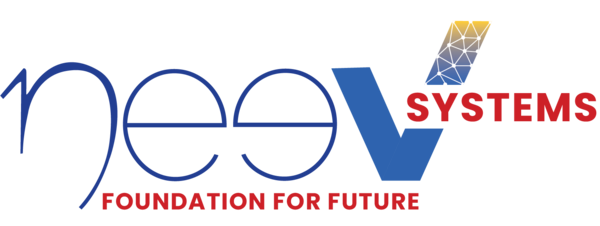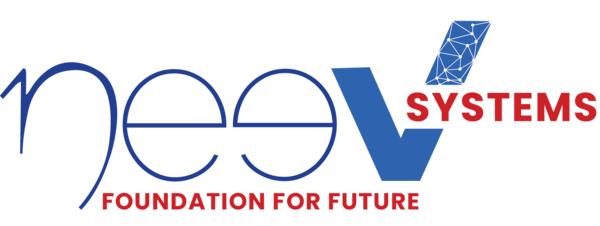In today’s rapidly evolving digital landscape, staying competitive and meeting the ever-changing demands of customers and businesses requires software that can adapt and scale at a moment’s notice. While often robust and reliable, legacy applications can be cumbersome and inflexible, hindering a company’s ability to respond to the demands of the modern business world.
According to a Survey, Over three-quarters (79%) of enterprises reported that legacy applications hinder their organization’s digital transformation initiatives. So, instead of dealing with clunky, outdated software that slows down your business, it’s time to embrace the future of application development and modernize your legacy applications with microservices.
In this blog, we’ll explore the concept of modernizing legacy applications with microservices and how this approach can improve your software architecture. But before delving directly into microservices, let’s first understand the challenges associated with legacy apps that make it necessary to modernize legacy applications.
Challenges with Legacy Applications and Their Impact on Businesses
Legacy applications are crucial in business operations, such as customer data management and inventory tracking. However, legacy systems present significant challenges:
- Monolithic Nature: They often have tightly integrated functionalities, hindering changes and requiring extensive testing and costly downtime.
- Limited Flexibility: Rigid architectures struggle to adapt to evolving business needs or integrate new technologies.
- Unit of Deployment: The entire functionality is deployed as one unit and packaged into a single process that lacks agility in terms of maintenance and manageability.
- Integration Issues: Legacy systems frequently operate in isolation from other systems and applications within an organization. The process of integrating them with other systems can be demanding, necessitating custom coding and substantial resource allocation.
Addressing these challenges requires modernization. In fact, according to a recent survey, 87% of business leaders indicated modernization would be crucial for them to achieve business success. Therefore, businesses must assess their systems and plan for future tech needs to stay competitive.
However, monoliths offer many advantages, viz., simple deployment topology unlike distributed microservices, well-defined workflows, ease of monitoring, and immense code reuse across modules. The monolith vs. microservices strategy must be a well-thought-through process considering trade-offs.
Let’s now look at a few patterns to modernize legacy applications.
Application Modernization Patterns
- Rehosting – Also known as “lift-and-shift,” prioritizes speed by transferring applications from their previous environment to a current one with minimal code changes.
- Replatforming – Falls between rehosting and refactoring, involving code adjustments to make applications compatible with cloud technologies.
- Refactoring (repackaging) focuses on productivity and speed, requiring minimal code changes to integrate apps seamlessly into a cloud-first environment. A development team may choose this to break a monolithic app into smaller, independent parts known as microservices. This allows them to maximize benefits from cloud-native tools like containers and orchestration.
- Rearchitecting – It is suitable for organizations needing cloud scalability, involving modifications and extensions to app functionality and code for improved cloud performance.
- Rebuilding (rewriting) – It is a heavier lift but may be necessary for recreating apps using cloud solutions, especially if existing apps have limited functionality or lifespan.
- Replacing – It becomes necessary if an app, even after rebuilding, doesn’t meet current or future business needs. It involves substituting the app with a ready-made solution, potentially saving development resources but posing challenges like business process interruptions.
Now that you have understood the various patterns or approaches to modernize legacy apps, let’s explore the most widely used pattern/approach in detail, the Microservices Approach.
What are Microservices?
Microservices can be defined as a software architecture where an application is broken down into smaller independent services. Each service is responsible for performing a specific function and can communicate with other services through APIs. This modular approach makes it easier to manage complex systems by breaking them down into smaller parts.
Key Principles of Microservices
- Decoupling: Microservices uphold the principle of decoupling. Each service operates independently without relying on other services to function. They communicate through standardized APIs, fostering a modular development approach that allows for adding or removing individual services without disrupting the overall system.
- Distributed Computing: Microservices advocate a distributed computing model, where different parts of an application can run on separate servers or in diverse environments, such as on-premises or in the cloud. This provides developers with more choices and optimizes resource utilization.
- Single Responsibility: Unlike traditional monolithic applications where all functionalities are bundled together, microservices are designed to perform specific tasks within an application. This focus on single responsibilities leads to smaller, more comprehensible codebases, simplifying maintenance and overall system understanding.
Benefits of Using Microservices for Legacy App Modernization
The adoption of a microservices architecture for modernizing legacy applications brings forth a range of advantages:
- Increased Scalability and Flexibility: Microservices enable superior scalability and flexibility. In monolithic systems, scaling can be cumbersome and time-consuming. Microservices allow independent scaling of each service based on specific requirements, optimizing resource allocation and enhancing performance and cost-effectiveness.
- Resilience: Unlike traditional monolithic applications, where the failure of one component can disrupt the entire system, microservices operate independently. This reduced interdependence reduces downtime and enhances overall system stability.
- Easier Maintenance: Legacy applications can become challenging to maintain due to their tightly coupled nature. Microservices facilitate easy updates and changes to individual services without affecting other components, streamlining maintenance efforts.
- Faster Time-to-Market: Microservices expedite development by allowing concurrent work on individual services. This accelerates the deployment of new features and updates, providing a competitive edge in the market.
- Better Technology Stack: Legacy applications often rely on outdated technology stacks. Microservices enable the use of diverse technologies for different services, ensuring flexibility and access to modern tools and frameworks.
- Cost-Effectiveness: Microservices architecture leads to long-term cost savings. Scaling only the necessary components minimizes resource and infrastructure expenses, resulting in cost-effective modernization.
In fact, a recent study conducted by Forrester Consulting on behalf of Microsoft, The Total Economic ImpactTM (TEI) of Azure PaaS, showcased that organizations achieved a three-year 228 percent return on investment (ROI), with a payback period of 15 months by modernizing applications using Azure PaaS. Not only this, but the organizations also achieved a 50 percent increase in the speed of application development and a 40 percent reduction in app-dev-related infrastructure costs.

Unlock the Potential of Microservices
Steps to Modernize Apps with Microservices
Modernizing legacy applications with microservices is a multi-step process that requires careful planning and execution. Here are the key steps involved:
- Assessment: Start by assessing your legacy application to identify its weaknesses and areas for improvement. Understand the business goals and objectives for the modernization project.
- Service Decomposition: Break down your monolithic application into smaller, logical components. These components will become your microservices.
- Technology Selection: Choose the right technologies for each microservice based on its specific requirements. This allows for flexibility and optimization.
- API Design: Develop robust APIs to enable communication between microservices. Standardize API design and versioning for better maintainability.
- Testing and Deployment: Implement a robust testing strategy to ensure the reliability of each microservice. Gradually deploy microservices while keeping the legacy system operational during the transition.
- Monitoring and Management: Implement monitoring and management tools to keep track of the performance and health of your microservices. This is crucial for maintaining reliability and scalability.
- Security: Pay special attention to security, as microservices expose more surfaces for potential attacks. Implement security best practices and consider utilizing microservices-specific security tools.
- Continuous Integration and Deployment (CI/CD): Automate the deployment process to achieve faster, more reliable releases. CI/CD pipelines are essential for managing a microservices architecture effectively.
By following these steps, you can effectively modernize your legacy apps. However, there are a few KPIs that you should consider to measure the effectiveness of the application modernization efforts.
KPIs To Measure The Success of Application Modernization Efforts
Focusing on Key Performance Indicators (KPIs) relevant to your organization is crucial during the modernization journey. Each company’s path to modernization is unique, with distinct challenges and current goals.
However, there are several common categories of metrics that are typically monitored and enhanced in the process of application modernization:
- IT Expenditure – This includes hardware, software, and maintenance costs.
- Business Agility – The elimination of technical obstacles to seize new opportunities.
- Scalability & Elasticity – Ensuring optimal resource utilization while maintaining performance, especially during high demand.
- Data Analytics – Improving data availability, integration, reporting, and analytical capabilities.
- System and Data Security – Identifying and resolving vulnerabilities to protect customer data, thus avoiding reputation damage and financial losses.
- Customer Experience – Utilizing real-time data processing to provide real-time services enhances customer experience.
- Time to Market – Embracing cloud-native infrastructure and DevOps practices to expedite application delivery.
- Operational Efficiency – The speed at which changes can be deployed and errors rectified.
- Performance – Enhancing application response times, throughput, and resource utilization.
Tailoring your modernization efforts to improve these KPIs is essential for aligning with your organization’s specific objectives.
MicroServices Security Considerations
In today’s digital landscape, where data breaches and cyber threats are constant concerns, security plays a pivotal role in modernizing applications with microservices. Ensuring the safety of sensitive information and maintaining the trust of your customers is paramount when transitioning to microservices.
Here are a few things to keep in mind:
- Security by Design: When adopting a microservices architecture, it’s essential to integrate security from the outset. Implement a “security by design” approach, where security is a fundamental consideration in the development process. This includes threat modeling, risk assessments, and proactive identification and mitigation of vulnerabilities.
- Authentication and Authorization: Implement robust authentication and authorization mechanisms to control access to your microservices. Ensure only authorized users or services can interact with each microservice, and employ techniques like OAuth, JWT, or API keys for secure access.
- Secure Communication: Microservices often communicate over networks, which opens opportunities for eavesdropping and man-in-the-middle attacks. Use encryption protocols like HTTPS and TLS to secure data in transit. Implement mutual TLS (mTLS) for service-to-service communication to authenticate both ends.
- API Security: Your microservices rely heavily on APIs for communication. Protect your APIs with proper security measures. This includes rate limiting, input validation, and ensuring that only authenticated and authorized requests are processed.
- Container Security: If you use containerization, secure your containers by following best practices like minimizing the attack surface, regularly updating base images, and scanning for vulnerabilities. Container security tools like Docker Security Scanning can help in this regard.
- Access Control and Least Privilege: Enforce the principle of least privilege to limit the access each service has to sensitive resources. Implement role-based access control (RBAC) to manage permissions effectively.
- Monitoring and Logging: Implement robust monitoring and logging to detect and respond to security incidents. Use tools like Prometheus, Grafana, and ELK (Elasticsearch, Logstash, and Kibana) for comprehensive visibility into your microservices environment.
- Security Testing: Regularly perform security testing, including penetration testing and code reviews, to identify and fix vulnerabilities. Automated security testing tools, such as OWASP ZAP, can assist in this process.
- Compliance and Regulations: Ensure your microservices adhere to industry-specific compliance requirements and regulations, such as GDPR, HIPAA, or PCI DSS, depending on your business domain.
- Incident Response Plan: Develop a well-defined incident response plan to handle security breaches effectively. This plan should include steps for containment, eradication, and recovery.
- Security Culture: Promote a security-conscious culture within your organization. Educate your development and operations teams about security best practices and inform them of their responsibilities.
- Third-Party Services: When integrating third-party services or components into your microservices, assess their security practices and ensure they meet your security standards.
- Security Tools: Leverage security tools and services designed for microservices environments. Some notable tools include Kubernetes Network Policies for network segmentation, Istio for service mesh security, and tools like Aqua Security and Twistlock for container security.
Incorporating these security considerations, best practices, and tools into your microservices modernization journey is critical for safeguarding your applications and data in today’s threat landscape. By making security an integral part of your microservices strategy, you can ensure a robust and resilient system that instils customer trust and confidence.
Other Considerations for Modernizing Legacy Applications with Microservices
- Application Complexity: Legacy applications are often monolithic and tightly coupled, making decomposing challenging. Understanding their architecture and dependencies is crucial.
- Team Capabilities: Microservices require specialized skills. Ensure your team is proficient in containerization, orchestration, and cloud platforms, or consider training.
- Cultural Shift: Transitioning to microservices requires a cultural shift. Involve all stakeholders and shift from a project-based mindset to an agile approach.
- Data Management: Microservices may lead to data redundancy and inconsistency. Develop a data management strategy to maintain data integrity across services.
- Testing and Deployment: Testing and deploying multiple independent services can be complex. Implement automated testing and CI/CD pipelines for efficient management.
- Monitoring: Microservices demand robust monitoring to identify issues and ensure system health. Monitor each service and their interactions to prevent bottlenecks or failures.
- Cost Considerations: While microservices can lead to long-term cost savings, initial costs for infrastructure and training must be weighed carefully.
Successful Examples of Businesses Modernizing Legacy Apps with Microservices
- Adidas: The integration of microservices unleashed remarkable results for Adidas’ e-commerce platform, catapulting website speed by 300% and propelling mobile sales to an astonishing 500% increase.
- SoundCloud: By embracing microservices, SoundCloud underwent a transformative platform restructuring, enabling rapid feature deployment and achieving load times 2.5 times faster.
- Netflix: With its microservices architecture, Netflix overcame scalability issues and sped up feature deployment, resulting in a faster time-to-market and improved cost-efficiency for the popular streaming service.
- Etsy: By transitioning to microservices, Etsy boosted development speed, site reliability, and scalability, contributing to a 50% surge in stock prices.
- Amazon: Amazon leveraged microservices to enhance scalability, boost performance, and introduce new features seamlessly, all while reducing operational costs.
- Spotify: Spotify’s adoption of microservices resulted in a highly scalable platform with improved reliability and quicker content delivery, promoting innovation without service disruptions.
Future and Emerging Trends of Microservices
Industry Predictions
The microservices market is expected to grow from USD 838.6 million in 2022 to USD 1718.2 million by 2028 at a CAGR of 24.5%.
(Source: Cloud Microservices Market Size Analysis 2023).
Role in Emerging Technologies
Microservices are well-suited for developing applications that leverage emerging technologies such as IoT, edge computing, and blockchain.
- IoT: IoT devices generate a large amount of data that needs to be processed and analyzed in real-time. Microservices can be used to develop distributed applications to process and analyze this data efficiently.
- Edge computing: Edge computing brings computation and data storage closer to the gadgets where the data is generated. Microservices can be used to develop edge computing applications that can process and analyze data in real time without sending it to the cloud.
- Blockchain: Blockchain is an appropriate ledger technology that can be used to create tamper-proof transactions reports. Microservices can be used to develop blockchain-based applications that are secure, scalable, and resilient.
Potential Disruptions and Innovations
The following are some potential disruptions and innovations in the microservices space:
- Serverless computing: Serverless computing is a cloud computing model where the provider manages the server infrastructure. Allows developers to focus on creating code without worrying about managing servers. Microservices are well-suited for serverless computing, as each service can be deployed and scaled independently.
- Mesh networking: Mesh networking is a network architecture where devices communicate with each other directly without the need for a central server. Microservices can be used to develop mesh networking applications that are decentralized, resilient, and scalable.
- Artificial intelligence (AI): AI can be used to develop more intelligent and autonomous microservices. For example, AI can create microservices that can automatically scale themselves to meet demand or self-heal from failures.
Conclusion
In a rapidly evolving digital landscape, legacy applications can impede progress, leading to scalability issues, rigidity, and security vulnerabilities. Microservices offer a transformative solution. These modular, independent service components empower businesses to overcome legacy challenges by enhancing scalability, resilience, flexibility, and cost-effectiveness.
From incremental migration to complete rewrites, containerization, and API gateways, a range of approaches facilitates the transition to microservices. However, this journey necessitates careful considerations, such as understanding application complexity, nurturing team expertise, fostering a cultural shift, ensuring data management, efficient testing and deployment, robust monitoring, and cost management.
Neev Systems, with its microservices expertise, empowers businesses to navigate this transformative path. Our incremental approach minimizes risks and ensures a smooth transition. We understand that modernization transcends technology; it’s a cultural evolution that propels innovation and agility.
We’re here to help you future-proof your business and embrace limitless possibilities.

Are You Ready to Modernize?

Sitaram Pothula
With 22+ years of IT experience, Sitaram combines technical expertise with strategic leadership. He has led engineering teams and delivered solutions across BFSI, telecom, and healthcare. Sitaram excels in aligning technology with business goals to drive innovation and efficiency.


